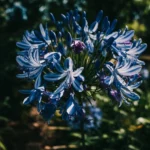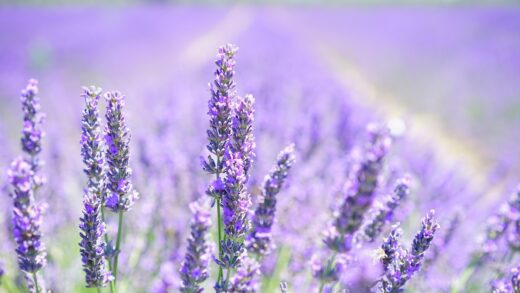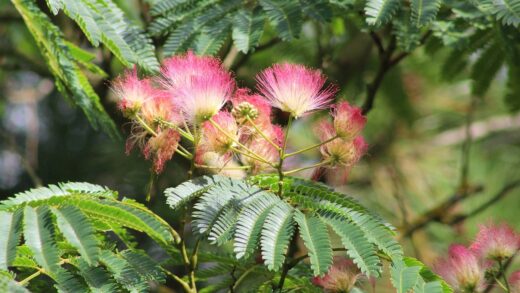Wintering American pokeweed is a remarkably simple process, as the plant is a hardy and self-sufficient herbaceous perennial perfectly adapted to surviving cold climates. Unlike tender plants that require complex protection or need to be brought indoors, pokeweed manages its own winter survival through its natural life cycle. The entire top portion of the plant, including the stems, leaves, and berries, is not designed to survive the cold and will naturally die back to the ground with the first hard frosts of late autumn or early winter. The life force of the plant retreats into its massive underground taproot, which is the key to its winter hardiness. This taproot acts as a storage organ, holding all the energy the plant needs to lie dormant through the coldest months and re-sprout with vigor the following spring.
The primary task for the gardener in preparing pokeweed for winter is simply to perform a bit of seasonal cleanup. Once the top growth has been killed by the frost and has withered, it should be cut down to the ground. This is not strictly necessary for the plant’s survival, as it would naturally decompose over the winter, but it is good garden practice. Removing the dead stems tidies the appearance of the winter garden, prevents the debris from smothering nearby evergreen plants, and, most importantly, eliminates any remaining seeds that could be dispersed during the winter, helping to control the plant’s spread. This annual haircut is the main act of winter care you will need to perform.
There is no need to provide any special winter protection for the roots of an established pokeweed plant, provided it is growing within its natural hardiness range. The plant is native to a large portion of North America and is typically hardy in USDA zones 4 through 8, meaning it can withstand significant freezing temperatures without any issue. The soil itself provides excellent insulation for the dormant taproot. In fact, adding a heavy layer of mulch directly on top of the crown is generally unnecessary and could potentially trap excess moisture, which might lead to rot.
The winter dormancy period is a crucial phase in the plant’s life. During this time, the taproot is in a state of rest, but it is also undergoing the physiological changes needed to prepare for the explosive growth of spring. The cold period helps to satisfy the plant’s chilling requirement, which is a necessary trigger for breaking dormancy and initiating new growth once the weather warms. Therefore, you should simply let nature take its course. The winter care for pokeweed is a perfect example of low-maintenance gardening: a simple cleanup followed by a period of benign neglect.
Understanding its hardy nature
The winter hardiness of American pokeweed is fundamentally linked to its life strategy as an herbaceous perennial and the anatomy of its root system. Unlike woody plants such as trees and shrubs, which maintain living, above-ground structures through the winter, pokeweed invests all of its survival resources into what lies beneath the soil. The above-ground growth is temporary, existing only for a single season to photosynthesize, produce flowers, and set seed. This strategy allows the plant to completely avoid the challenges of winter winds, ice, and snow that can damage woody structures.
More articles on this topic
The taproot is the heart of the plant’s winter survival. Over the course of the growing season, this root swells as it stores carbohydrates produced by the leaves through photosynthesis. By the time the first frost arrives, the taproot is fully charged with enough energy to sustain the plant through its dormant period and, critically, to fuel the initial, rapid growth of new shoots in the spring. This is why the new shoots can emerge with such force and speed before they have even produced large leaves to begin photosynthesizing again. They are running on the stored energy from the previous year.
This perennial nature means the plant is well-adapted to regions with cold, freezing winters. The ground acts as a natural insulator, protecting the dormant taproot from the most extreme air temperatures. Even if the top several inches of soil freeze solid, the deeper portions where the bulk of the taproot resides will remain at a more stable, non-lethal temperature. This adaptation is what defines its hardiness zone rating and allows it to persist for many years in the same location, with each year’s plant growing from the same, ever-enlarging rootstock.
For the gardener, this understanding means you can have confidence in the plant’s ability to return year after year without any special intervention. It is a truly resilient and permanent fixture in the landscape once established. Its hardiness is not just about temperature tolerance; it is a comprehensive survival strategy that makes it one of the most reliable and low-maintenance perennials you can grow. Your role is simply to provide it with a suitable location and then trust in its time-tested ability to manage the winter season on its own.
The end-of-season cutback
The single most important task in preparing American pokeweed for winter is the end-of-season cutback. This should be done after the first hard frost has caused the entire plant to wilt and turn black. At this stage, the plant has finished its seasonal cycle; it has reallocated all the useful energy from its leaves and stems down into the taproot for winter storage. The remaining top growth is now just dead organic matter. Waiting until after a killing frost ensures that you are not removing the foliage prematurely while it is still actively photosynthesizing and storing energy for the next year.
More articles on this topic
Using a sturdy pair of loppers or pruning shears, cut all the stems back to about five to ten centimeters above the ground. The stems are hollow and fleshy, so they are usually quite easy to cut through. Cutting them close to the ground results in a much tidier appearance for your winter garden beds. Leaving a short stub can also help you remember the exact location of the dormant plant, preventing you from accidentally digging into it during off-season garden work.
Proper disposal of the cut material is an important consideration. Because of the plant’s toxicity, you should avoid adding the stems and leaves to a compost pile that will be used on your vegetable garden. The safest option is to bag the debris for municipal green waste collection or dispose of it as regular trash, depending on your local guidelines. This also serves the purpose of removing any remaining berry clusters and seeds from your property, which is a key step in preventing the plant from spreading to unwanted areas.
This annual cutback is beneficial for several reasons. Primarily, it is an act of garden sanitation. The dead plant material can harbor fungal spores or pest eggs over the winter, so removing it helps to reduce the chance of disease or pest problems in the following season. It also prevents the large, dead stalks from falling over and making a mess in the garden during winter storms. It is a simple, ten-minute task that concludes the growing season and sets the stage for a clean and healthy start in the spring.
To mulch or not to mulch
When it comes to winter care for perennials, the question of whether or not to apply a protective layer of mulch is a common one. For American pokeweed, however, the answer is generally no. A mature, established plant that is growing within its designated hardiness zone does not require any additional winter insulation. Its large taproot is buried deep enough in the soil to be protected from freezing temperatures, and the plant is genetically adapted to survive the winter without any help. Adding a thick layer of mulch is an unnecessary step.
In fact, applying a heavy winter mulch can sometimes do more harm than good. A thick layer of organic material, such as shredded leaves or straw, placed directly over the plant’s crown can trap an excessive amount of moisture against the top of the taproot. In regions with wet winters, this can create waterlogged, anaerobic conditions that promote rot. The crown of the plant, where the new shoots will emerge, is the most vulnerable part, and keeping it overly wet and covered can be detrimental. It is better to leave the soil exposed to the air.
There is, however, one exception to this rule. If you are attempting to grow American pokeweed at the very northern edge of its hardiness range or even one zone colder, a winter mulch might provide some benefit. The same applies to a very young plant that has just gone through its first growing season and has not yet developed a massive taproot. In these specific cases, a light, airy mulch applied after the ground has frozen can help to insulate the soil and protect the less-developed root system from extreme cold and temperature fluctuations.
If you do decide to mulch in these specific circumstances, choose a material that does not compact and become waterlogged, such as pine boughs or a loose layer of straw. The mulch should be applied after the first hard freeze and then removed in early spring as soon as the threat of severe cold has passed. This will allow the soil to warm up quickly and prevent the mulch from smothering the new shoots as they emerge. For the vast majority of situations, though, the simplest and best approach is to skip winter mulching altogether.
Preparing for spring emergence
While the American pokeweed plant is dormant and requires no active care during the winter, the thoughtful gardener can use this time to prepare for its vigorous return in the spring. The most important preparation is to ensure that the area where the plant will emerge is clear and ready. As winter comes to a close, this is a good time to do a final cleanup of any remaining garden debris around the pokeweed’s location, giving the new shoots a clear path to the sun.
This is also an excellent time to make decisions about management for the upcoming season. Consider how large the plant was in the previous year and decide if you want to allow it to grow to its full potential or if you want to manage its size. As the new shoots emerge in the spring—often a vibrant, asparagus-like red—you can select the strongest few to keep and prune the rest at the ground level. This practice of shoot thinning can create a more open, architectural plant and improve air circulation, and the decision is best made before the season begins.
Part of preparing for spring is also being vigilant. The dormant period is a good time to reflect on whether any unwanted seedlings appeared in the previous year and to make a mental note to be on the lookout for new ones as soon as the soil warms up. Early spring, when the ground is soft, is the easiest time to remove any volunteer pokeweed plants before their taproots become deeply established. This proactive mindset is key to keeping the plant from spreading where it is not wanted.
Finally, resist the urge to interfere too early. The plant knows exactly when to break dormancy based on soil temperature and day length. There is no need to try to “wake it up” by watering or fertilizing. Simply ensure its location is clean and clear, and then have patience. One of the great joys of growing this plant is witnessing the incredible speed and power of its spring emergence. Your winter preparation is about setting the stage for this dramatic and reliable annual performance.


















